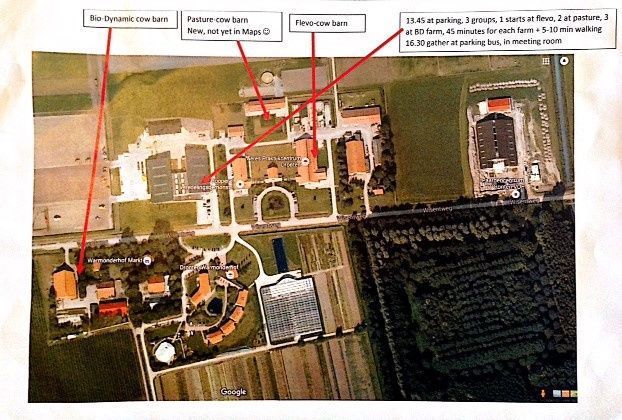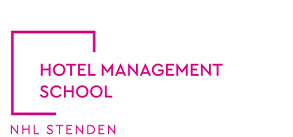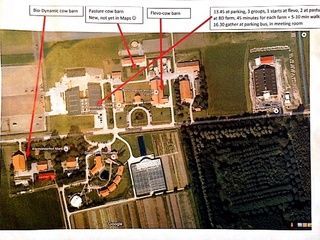
-
 publication: 24 November 2016
publication: 24 November 2016
Master in International Hospitality and Service management
A study visit to AERES (Dronten) and their model farms
By Wendy Mah, visiting master student from ‘Università del Gusto’ (Italy) and intern at the AIHR Research Group Sustainability in Hospitality and Tourism
On Tuesday, November 15th, 2016, a group of Masters students from the Stenden Hotel Management School, University of Applied Sciences partook in a field visit to Dronten, Netherlands, at the Aeres University of Applied Sciences. This trip was part of the module: Sustainable Value Creation in the Hospitality Industry. The specific field visit organized was to enable to students to discuss, observe, and discover three different methods of dairy farming practiced and studied at Aeres, in order to provide a more informed perspective in regards to this specific food chain.
Aeres University in Dronten focuses on the knowledge required to succeed in agribusiness, food production, horticulture, and animal science. The curriculum is a balance between theoretical studies and practical training. Since 1957, Dronten has been one of the foremost Dutch agricultural universities of applied sciences. This is in part due to Dronten existing on a Polder, a man-made, reclaimed land via a series of dams and dikes, making it the best quality soil. This polder was created to improve flood protection and create additional land for agriculture. Because of the value in the high quality soil, land prices in Dronten are approximately 100,000euros/ha. This makes it virtually impossible for a farmer to afford this, hence the introduction of highly efficient dairy farming methods to help support agriculture.
Stenden University in Leeuwarden offers a Masters of Arts program in International Hospitality and Service Management that instills important concepts required such as service and hospitality, as well as covering areas as diverse as sustainability, entrepreneurship, globalization and working within a multicultural context. Within this curriculum, a specific domain is provided to the Masters students in order to enhance their capability to support a more sustainable development in our organizations and societies. This domain is taught by UAS Professor, Elena Cavagnaro.
“Aeres grows plants and brains.” Ron Methorst
On this particular visit, we were met by Ron Methorst, a professor at Aeres in a greenhouse designed canteen. He guided us in a discussion on how students from Aeres viewed the role of agricultural actors and how Stenden students saw them. This was to help understand why people were still choosing a profession in agriculture, knowing that the salary is low and the labour high and long.
“People are still doing it because it is rooted in the family. There is attachment, satisfaction, and pride.” Leon, a student farmer
This visit, in particular was to view the practice training centres of Aeres. There were three dairy farms organized on different principles:
1) Conventional
2) Pastoral; en route to Organic
3) Bio-dynamic
The tours would split the Stenden students into three groups, led by student of Aeres, who also happen to be dairy farmers already. Instructions were given to pay particular attention to the differences in the three farms: barn style, attire by the farmers, smell, and the cow breeds.
A specific question was asked before we left for the visits:
“What would you want in purchasing your milk?”
As Hospitality students: “the cheapest.”
Another view of Stenden students was:
“Farmers believe that sustainable farming is crucial and should be a social responsibility for all farmers.”
This was met with a rebuttal by the Aeres students that the social responsibility should be a shared burden with the consumer as well, making informed choices in consumption and purchasing, such as citizens and future hospitality managers.

The Three Dairy Farm Visits
Hereunder I summarize our visit to the three farms in key words and key figures.
-
Conventional : Flevo Stable
Use of:
-
modern technology
-
cubicle/segregated housing
-
cows remain indoor 100% of their lifespan
Contains:
-
140 cows
-
120 on average produce milk.The other 20 are ‘dry,’ pregnant.
-
89 calves and heifers (up to 2yrs of age)
-
60ha of land with stable = 2.23 cows/ha
-
60 cows milked by a the ‘milk robot’ and cows choose when they are milked
-
60 cows milked with conventional milking equipment (2-3x/day)
-
Daily milk production = 3200kg of milk
-
Robot group: 9282kg milk/cow on a 305day cycle
-
Conventional group: 9282kg milk/cow on a 305day cycle
-
The cows eat around 25kg of concentrated feed for every 100kg of milk they produce = 7kg/cow/day
-
Pasture Stable
Use of:
-
Free stall housing, minimal segregation.
-
Weather permitting, cows remain outside.(April-September, virtually outside entire time)
-
In the process of organic certification (3year process…they are in the 2nd year)
Contains:
-
60 cows
-
62 calves and heifers
-
40ha of gras-clover in the stable = 1.5 cows/ha
-
Daily milk production = 1030kg milk
-
Milked conventionally: 7569kg milk/cow on a 395day cycle
-
Cows eat 10kg concentrated feed for every 100kg of milk = 2kg/cow/day
-
Bio-dynamic dairy farm (Warmonderhof) (Also Organic)
Use of:
-
Mixed farm with arable vegetable production
-
Old fashioned style barn.High roof for straw storage
-
Space = Cows not de-horned = more aware of themselves and more dominant
Contains:
-
Straw bedding mixed with manure.
-
Rudolf Steiner: Anthroposophy-centric values.Iso-teric practices.Cosmological beliefs.
-
Horns, reserves mineral, when cow is pregnant
-
Crop rotation/cow rotation…gras-clover grown, own manure used.
-
Size and shape of cow.Sturdy.Meaty.
-
2years old. Begin providing milk.Milk producing for 10-15years.(Conventional cows: 4yrs of milk production)
-
Breed: Blarcoppen.“Blistered Eye.”An old Dutch Breed.Can digest lesser quality feed, less processed
-
5000kg/year in milk/305day cycle
-
50-60% more expensive milk product than the other farms
-
stronger, healthier cow
-
Direct market.Not sold in mainstream market.Own cheese production, via farmers markets and internet
-
Integrated with arable farming.Provide own feed.
-
No artificial insemination, must use Bull
-
No GMO plants.Seeds must be reproduced naturally
Review
After the three visits, the three groups of students reconvened and discussed their reflections with some three main questions to guide them:
-
What kind of system do you prefer as a person?
-
Are you as a consumer prepared to pay a premium price for milk from Pasture style and Bio-dynamic style?
-
As a manager in hospitality, would you buy milk products at a premium price from Pasture style and Bio-dynamic style?
There was a divide in opinions based on individual sentiments from the three different practices. When asked what milk they would choose personally and professionally, there was not much of a change. There was a general shift towards the ‘compromised’ practice, the Pastoral style, given the milk production, animal welfare, and price of milk. There were definite shifts is individual impressions on dairy production. Discussions wavered from the “cheapest” to the “best” practice, while providing the best price.
Visualizing practices and not just looking at statistical facts opens up a broader perspective and change in opinions. This visit was influential in opening up the module for Sustainable Value Creation in the Hospitality Industry, giving substance to the data the Masters students will learn throughout the rest of the module.




 Back to overview
Back to overview

